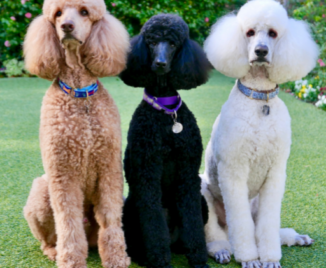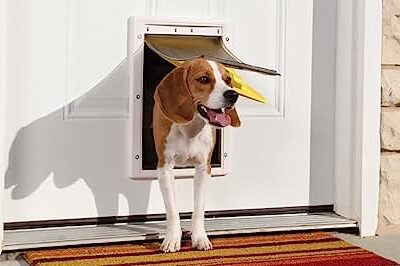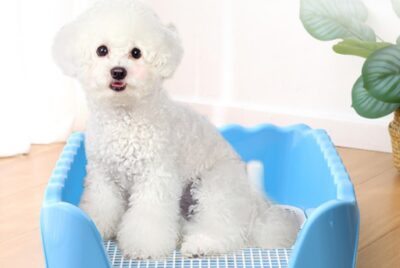Dog Muzzles: A Guide to Safety, Control, and Training
Introduction
As a dog enthusiast and advisor, I understand the importance of keeping our furry friends safe and well-behaved. One tool that often comes into play is dog muzzles. In this article, we will explore the benefits of using a dog muzzle, providing helpful suggestions and reasons for your consideration.
What are Dog Muzzles?
A dog muzzle is a device designed to fit securely over a dog’s snout, preventing it from opening its mouth fully or inhibiting its ability to bite. It is typically made of various materials such as leather, nylon, or wire mesh and is adjustable to ensure a proper fit.
Benefits of Using Dog Muzzles
Safety and Control
One of the primary benefits of using a dog muzzle is the enhanced safety and control it provides. In situations where a dog may exhibit aggressive behavior or fear, a muzzle can prevent potential injuries to both humans and other animals. It allows you to have peace of mind while managing your dog’s behavior in public places.
Preventing Biting and Chewing
A dog muzzle acts as a physical barrier, preventing biting and chewing incidents. Dogs may exhibit aggressive behavior due to fear, anxiety, or past traumatic experiences. By using a muzzle, you can protect others from potential harm, while also ensuring your dog’s well-being and preventing self-injury.
Training Aid
A dog muzzle can be a valuable tool in training and behavior modification. It helps in shaping desired behaviors and discouraging unwanted ones. By using positive reinforcement techniques alongside a muzzle, you can encourage your dog to exhibit calm and non-threatening behavior, gradually reducing the need for its use over time.
Public Perception
In some cases, the mere presence of a muzzle can improve public perception of your dog. People who are unfamiliar with your dog’s temperament may feel more at ease when they see a muzzle, leading to fewer confrontations and misunderstandings. It demonstrates responsible ownership and a proactive approach to ensuring public safety.
Choosing the Right Dog Muzzles
Types of Dog Muzzles
When choosing a dog muzzle, it’s important to consider the different types available. Basket muzzles, for example, allow dogs to pant, drink, and take treats while still preventing biting. Soft muzzles, on the other hand, are more comfortable for short-term use but may not provide as much protection. The choice depends on your dog’s specific needs and the intended purpose of the muzzle.
Proper Fit and Comfort
A well-fitting muzzle is crucial for your dog’s comfort and safety. Measure your dog’s snout carefully to ensure the right size. The muzzle should be snug but not too tight, allowing your dog to open its mouth slightly. Comfort features such as padding can also help prevent chafing and rubbing.
Introducing the Dog Muzzle
Gradual Introduction
Introducing a dog muzzle should be done gradually to help your dog adjust to wearing it. Start by presenting the muzzle as a positive and rewarding experience. Offer treats and praise whenever your dog shows interest or allows you to touch the muzzle. Slowly progress to having your dog wear the muzzle for short periods, increasing the duration gradually.
Positive Reinforcement
During the muzzle introduction process, use positive reinforcement techniques to associate the muzzle with positive experiences. Reward your dog with treats, verbal praise, or playtime whenever the muzzle is worn successfully. This helps create a positive association and reduces any negative associations your dog may have with the muzzle.
Familiarization and Desensitization
Once your dog is comfortable wearing the muzzle for short periods, gradually expose it to different environments and situations. This desensitization process helps your dog become accustomed to wearing the muzzle in various settings, reducing anxiety and stress. Gradually increase the complexity of the situations to ensure your dog remains calm and relaxed while wearing the muzzle.
Final Thoughts
Dog muzzles can be valuable tools for safety, control, and training. They provide an extra layer of protection for both your dog and those around you. By choosing the right muzzle, ensuring proper fit and comfort, and introducing it gradually with positive reinforcement, you can help your dog adjust and overcome any reservations they may have. Remember, always prioritize your dog’s well-being and consult with a professional trainer if needed.
FAQs (Frequently Asked Questions)
Q: Are dog muzzles cruel?
A: No, dog muzzles are not inherently cruel. When used responsibly and with proper training, they can be effective tools for safety and behavior management.
Q: Can a dog pant and drink water while wearing a muzzle?
A: Yes, certain types of muzzles, such as basket muzzles, allow dogs to pant, drink water, and even take treats.
Q: Should I muzzle my dog if it has never shown aggression?
A: Muzzling a non-aggressive dog is not necessary in most cases. However, it can be beneficial for training and behavior modification purposes, or in situations where there is potential for unpredictable behavior.
Q: How long should I leave a muzzle on my dog?
A: The duration of muzzle use depends on the specific situation and the needs of your dog. It is best to consult with a professional trainer or behaviorist to determine the appropriate duration for your dog.
Q: Can a muzzle replace proper training and socialization?
A: No, a muzzle should not replace proper training and socialization. It is a supplementary tool that can aid in behavior management and safety, but it should always be used in conjunction with proper training techniques.




